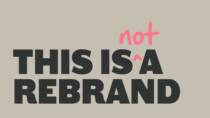Key insights on diversity, equity, inclusion, and belonging from the UK's Best Workplaces™
By Sally Pritchett
CEO
Want to create a more diverse, equitable, and inclusive workplace? In this blog we share insights from the UK's Best Workplaces™ on how to create a culture where everyone feels valued, respected, and heard.
Last week, we had the privilege of taking part in Great Place to Work‘s first ‘For All Community’ event. The inaugural event gathered the UK’s Best Workplaces for meaningful discussions on diversity, equity, inclusion, and belonging (DEIB).
We heard from DHL (the World’s Number 1 Best Workplace) and our CEO, for a panel discussion on DHL’s global group-wide approach to belonging. Speakers from Cisco (the UK’s current Number 1 Best Workplace), Vodafone and Version 1 discussed the balance of DEIB in today’s world, with a focus on the role of employee resource groups (ERGs). We then heard from The Prince’s Trust, as they shared how ‘listening into action’ can make an impact.
To help you to foster an inclusive and equitable workplace, we have compiled some key insights from the event:
Prioritise communications
Clear and effective communication emerged as a vital element of successful workplaces. An analysis of anonymous feedback from the UK’s Best Workplaces revealed that strong communication was a top reason employees choose to stay. To build trust and transparency, alignment and understanding, and empower the employee voice, businesses need to prioritise their communication practices.
Connect the dots
While the ultimate responsibility for DEIB may vary across organisations, it is crucial for the communications and HR teams to work together and support each other. By fostering a strong partnership, these teams can develop and put in place DEIB strategies that drive positive change.
Maximise the potential of surveys
The phrase ‘what gets measured gets done’ was regularly repeated. Several speakers emphasised the significance of measuring progress to ensure meaningful change. Employee surveys can help you to gather valuable insights and enable you to prioritise employee feedback. Focus on improving survey response rates to gain a deeper understanding of your organisation’s DEIB landscape.
Listen to employee feedback
Actively listen to employees. Provide them with feedback on the insights learned from surveys or other channels. Play back what you’ve heard, what you’re going to work on, how they can help change, the timescales for actions. If there is anything difficult to solve be clear on this and set expectations.
Support ERGs
Employee resource groups and networks play a pivotal role in creating inclusive environments. Organisations need to value the expertise that sits within their ERGs, celebrate them, and provide adequate support and resources. Empower your ERGs to have clear missions and amplify their voices within the organisation.
Encourage human leadership
Leadership plays a critical role in shaping the company culture. Encourage leaders to lead with compassion and vulnerability, fostering an environment where open conversations about DEIB can thrive. Equip them with the necessary tools and resources to navigate sensitive discussions effectively and drive meaningful change from the top.
Foster a psychologically safe culture
Creating a psychologically safe workplace is essential for promoting DEIB. Establish an environment where mistakes are seen as learning opportunities. Equip your teams with the tools so that they can address harmful behaviour through “calling in” rather than “calling out”. Foster open conversations, provide education and awareness programs, and create safe spaces for employees to learn and grow.
Treat people as individuals
Every employee brings their unique identity and experiences to the workplace. Even within a global business with tens or hundreds of thousands of employees, recognise and respect individuality, valuing the diverse perspectives and talents that each person contributes.
Within all the discussions and insights shared at the For All Community event, one key message resonated strongly: do what you can today to keep diversity, equity, and inclusion moving forward. Each day presents an opportunity to make a meaningful difference.
We’re here to help you with your DEIB efforts, supporting you with impactful and authentic communications that foster a genuine sense of belonging.
Diversity and Inclusion Calendar
By Sally Pritchett
CEO
We have created a comprehensive, downloadable, diversity and inclusion calendar for 2023 - so you never miss an important date.
Diversity and inclusion isn’t a short-term objective that you can tick off the list – it’s an ongoing commitment to ensuring that every individual in your workforce feels heard, respected and valued, and has an equitable opportunity to fulfil their potential.
This calendar has been designed to help you keep your diversity and inclusion employee engagement programmes on track. Our DEI calendar includes a wide range of cultural, racial, religious, age, gender, sexual orientation and disability awareness dates.
Impact of Communications
Communication is a powerful tool.
When used effectively, it can help to build relationships, create understanding, and inspire action. In the workplace, effective communication can help to improve employee engagement, boost morale, and increase productivity. It can also help to attract and retain top talent, build a strong brand reputation, and achieve organisational goals.
In this video series we’re exploring the impact of communications, from how to effectively communicate purpose to creating inclusion and belonging in the workplace, from how to break down stigmas to supporting employees to find balance and wellbeing. At Something Big we’re passionate about creating change and making a meaningful difference and in this series we explore how communications can achieve long-lasting impact.
Communicating impact
Hannah Keartland collaborates with business leaders who are committed to making a significant positive impact on people and planet. In this video, Hannah and our CEO, Sally Pritchett, delve into how purpose-driven organisations can effectively communicate their social and environmental impact.
If you’re seeking to communicate your business’ purpose and impact in an effective and meaningful way, we’d love to hear from you. Get in touch
The art of delivering bad news
Receiving bad news can be challenging, particularly when the delivery is less than ideal. As humans, we can struggle to process difficult information, and it can be hard to know how to communicate effectively in such situations. In this video, Nicola Bush offers valuable insights on how to deliver bad news in a compassionate and effective manner.
Get in touch to see how we can help you to navigate difficult conversations with empathy and professionalism. Get in touch
Embracing neurodiversity
In this video, our CEO, Sally Pritchett, emphasises the need for businesses to become better allies to the neurodiverse community and to make accommodations and adjustments for everyone, regardless of diagnosis. She also discusses the importance of creating networks to support employees and celebrating the potential of the neurodiverse community.
Chat to us to find out how we can help you to create culture of trust and inclusivity. Get in touch
Supporting frontline workers
Many employers have risen to the challenge of hybrid working and demands for a better work/life balance, but it seems that the world has changed for everyone except those on the frontline. In the context of widespread industrial action in the UK, in the video, Strategy & Insight Director, Tor Radford, asks the question, how can the employee experience for frontline workers be improved? Tor discusses how better considered communications could help close the gap between operational and corporate staff.
If you are struggling to reach and engage your frontline employees, talk to us to see how we could help. Get in touch
Taking the taboo out of menopause
In this video, Account Director Emma Bond discusses women’s health, with a specific focus on breaking down the stigma surrounding menopause. Emma explores why businesses should create a supportive culture of psychological safety that enables women to thrive.
If you’re looking to tackle taboos, such as menopause, in your workplace, talk to us to see how we can help. Get in touch
The crossover of internal and external comms
Every piece of internal communication has the power to either strengthen or damage your brand. In this video Adam Longobardi discusses how the rise of social media and a competitive job market has led to the growing crossover between internal and external comms.
Talk to us about how you can increase the impact and creativity of your internal communications campaigns. Get in touch
Achieving balance in the workplace
Women often experience numerous life stages throughout their careers, including potential pregnancy and returning to work after maternity leave, to perimenopause and menopause. In this video, Account Director, Emma Christie-Hall, highlights the cultural shift needed to enable employers to better support their employees in finding balance throughout their careers.
Cultivating psychologically safe workplaces requires strong communication and company culture, chat to us to see how we can support you. Get in touch
The secret to winning the talent war
In the never-ending battle for top talent, what will set your business apart from the rest? In this video, our Commercial Director, Felicity Allen, draws upon her extensive experience in recruitment and retention within a highly competitive job market, and highlights the crucial role of purpose and culture in attracting and retaining top talent.
If you’re fighting in the talent war, we have lots of experience with creative campaigns that cut through the noise. Get in touch
TURN
IT UP
We turn up to make sure the right messages are heard – loud and clear.

This is not a rebrand
By Sally Pritchett
CEO
At Something Big, we’ve been on a journey of meaningful change.
For nearly twenty-five years, we have always tried to do the right thing by our clients, our people and our world, and that passion is stronger than ever – but we also want to reach further.
In recent years we’ve been looking at every aspect of what it means to be a business in the modern world, taking time to listen, research and learn.
We’ve enthusiastically embraced the benefits of a more flexible workplace, focused on creating an atmosphere of belonging, and made all kinds of changes that will help us have a more positive impact upon the world.
Our goal has been, and remains to be, to help talented people do great work for clients who share our passion to make a meaningful difference to our society and our planet.
Our brand change has put making a ‘meaningful difference’ at the very heart of our business, exactly where it should be. We’re taking action to create a better future for all. We’re stepping up to the challenges our society and planet face, and we’re doing it in a way that’s accountable, robust, and permanent.
Did you know that we are part of the following initiatives?
B Corp
We are proudly B Corp Certified, and part of the global movement driving business to be a force for good. This means we strive to make a positive impact on society and our planet, and we are held accountable for our actions. Find out more.
Employee-owned
We’re an employee-owned business, which means we all work together for the success of the company and, when the company does well, we all benefit. Find out more.
Great Place to Work®
We’ve been independently recognised by Great Place to Work® as a Best UK Workplace™ for women and wellbeing, based on feedback from our employees. Find out more.
Planet Mark
As a Planet Mark-certified business, we’re looking to positively transform the planet by measuring and reducing our environmental impact. Find out more.
We’re determined to continue to make a positive impact to people and planet, and our updated brand now better reflects this.
For a personal story from our CEO, Sally Pritchett, check out her recent LinkedIn article here. Sally explains how she was inspired by Mary Portas when she said: ‘It’s time to grow the trees we won’t sit beneath’.
So, although we have a fresh new logo and our website may have had a makeover, this is not a rebrand. It’s our commitment to always creating a meaningful difference – for our clients and their employees, for our team, for society and for our planet.
7 March 2023
ESG communications: how to get your story started
By Sally Pritchett
CEO
In this blog we’ll help you get to grips with ESG communications and get you started on telling your ESG story.
As a communications professional is likely that you’re increasingly seeing and hearing the term ESG (Environmental, Social and Governance).
The world has changed, and internal and external stakeholders are increasingly holding businesses accountable for the impact they’re having on our planet and society. Across the globe, brands have been allocating more resources towards improving their ESG credentials, instigating a radical change in how brand value is viewed. For ambitious organisations, how they communicate their ESG activities should be sitting at the heart of their growth strategies.
The complexities of ESG communications
This topic is complex to navigate, so you’re not alone in feeling that way. The first thing we hear from the communicators we work with is that this topic can feel overwhelming, not only in its broad scope but also in finding the balance between speaking up on the actions being taken and being transparent, whilst also getting the right tone and avoid greenwashing.
For example, on the environmental side of things:
- The calculations and terminology around carbon emissions are highly complex
- The definitions around buzz words like ‘net zero’ and ‘carbon neutral’ are technical and often misunderstood
- The carbon cost of everything
- The finer details of what is the more sustainable choice is often complex, such as the balance between ‘paperless’ which sounds better but in practice requires a large amount of (often carbon-emitting) cloud storage
In social terms again there is also complexity, for example with law and social norms varying across the world. What feels like a complete injustice that needs to be solved in one part of the world, could actually be putting your employees at risk in another.
Getting started with ESG communications
The topic is complex topic, so it’s let’s get started with some simple advice.
Find the experts: Whether you’re writing for a large or small organisation, get as close as you can to the leadership team who will be at the heart of any goals and commitment to actions. It’s important you’re telling the right story. If you’re in a larger business, stick close to the experts you have, like your Sustainability Lead, People Director, Head of Corporate Affairs etc. These will be the people who can help you navigate the complexity.
Stay in your lane: Your organisation cannot solve climate change or societal inequality all by itself. For you to structure your story well, you’ll need to narrow down the specific areas your business is working on and the themes you’re focusing on. It’s a great idea to create some clear pillars of focus and then you can talk specifically on these areas. There are some great examples of organisations who have done this well, like fellow B Corp, Tony’s Chocolonely. They have committed to making chocolate 100% slave free. Their mission specifically focuses on human rights and social injustice, giving them a clear path to stick to.
Stick to the facts: Be clear around facts and use plain language. ESG is not the topic to add a marketing spin to. Your ESG communications need to be about clarity, reducing jargon where you can, and being as clear in what’s being said as possible. Avoid big sweeping, vague statements and stick to the clear issues identified and the actions you’re taking.
Be honest and transparent: The best ESG stories are the ones that are honest, frank and candid.
Structuring your ESG story
Once you’re ready to tell your ESG story, it’s important to consider structure. Every good story has a beginning, a middle and an end. If we look at ESG through this lens then your structure could be something like:
- The beginning – is where you are right now, the challenges your sector or industry is facing, and the problems your organisation is identifying.
- The middle – is about describing what you’re committing to doing about it, the actions you’re taking and the changes you’re making. This may be the pillars we mentioned earlier and will be generally positioning your organisation in terms of the journey you’re on.
- The end – is about the big goal. This is your ambition.
Some might say that the big goal should be the beginning of your ESG story, but we would encourage caution in that. It’s always good to start any mission with an end goal in mind, but leading an ESG story that way is how organisations have often fallen foul of mistrust. Communicating the big goal without the evidence of action to back it is a risky choice. Instead there’s an opportunity to build trust by talking about action first, and ambition last.
Corporate washing is a big problem, and consumers and employees are increasingly becoming skeptical of large brands making big ESG claims. If you’re nervous about how your ESG story will land, then try launching it in a safer space initially. Start with an internal launch, like with your leadership team, ERG groups, or other ESG champions in the business. These kinds of previews should uncover any questions or concerns that might come up later on, and will enable you to either prepare for them, or to add to your story.
Structuring your ESG story
Once you’re ready to tell your ESG story, it’s important to consider structure. Every good story has a beginning, a middle and an end. If we look at ESG through this lens then your structure could be something like:
- The beginning – is where you are right now, the challenges your sector or industry is facing, and the problems your organisation is identifying.
- The middle – is about describing what you’re committing to doing about it, the actions you’re taking and the changes you’re making. This may be the pillars we mentioned earlier and will be generally positioning your organisation in terms of the journey you’re on.
- The end – is about the big goal. This is your ambition.
Some might say that the big goal should be the beginning of your ESG story, but we would encourage caution in that. It’s always good to start any mission with an end goal in mind, but leading an ESG story that way is how organisations have often fallen foul of mistrust. Communicating the big goal without the evidence of action to back it is a risky choice. Instead there’s an opportunity to build trust by talking about action first, and ambition last.
Corporate washing is a big problem, and consumers and employees are increasingly becoming skeptical of large brands making big ESG claims. If you’re nervous about how your ESG story will land, then try launching it in a safer space initially. Start with an internal launch, like with your leadership team, ERG groups, or other ESG champions in the business. These kinds of previews should uncover any questions or concerns that might come up later on, and will enable you to either prepare for them, or to add to your story.
Get in touch with us if you’re looking for help with telling your ESG story.
What is ESG, and why does it matter?
By Sally Pritchett
CEO
It’s likely that you’re increasingly seeing and hearing the term ESG.
In this blog, we’ll discuss exactly what ESG is and why it matters to all businesses. ESG (Environmental, Social and Governance) is no longer a niche term with an investment focus, but instead is now a mainstream business interest.
What is ESG?
The world is changing. Brands are under increasing pressure to behave in an ethical and fair manner, and to project a public image of transparency and responsibility. Customers and employees are reserving their loyalty for businesses who share their values, and more people are holding brands accountable for the impact they’re having on our planet and society. There was a time when ESG strategies were a ‘nice to have’ but with growing stakeholder expectations, it’s become a necessity that you simply can’t ignore.
ESG refers to three non-financial performance indicators that measure the sustainability and ethical impact of a business – Environmental, Social and Governance.
In brief, ESG includes:
- Environmental – how the business minimises its impact on the environment
- Social – how the business impacts wider society and workplace culture
- Governance – how the processes of decision-making, reporting, and logistics are handled
The Environmental scope of ESG
What is included under the Environmental indicator will largely be down to your individual business and sector. Broadly, Environmental will cover your sustainability journey, from calculating carbon emissions and your action plan to reduce them, to your journey to net zero or carbon positive. Environmental is all about the impact your business is having on the planet, how you’re mitigating or offsetting any negative impact, and anything you’re doing to make a positive impact on our environment. In our business, our Environmental strategy includes (but is not limited to) our carbon reduction plans, our carbon offsetting strategy and our commitment to leading a climate positive workforce. For other businesses Environmental could also include strategies to reduce waste, or innovations around tapping into clean energy sources.
The Social scope of ESG
The Social element of ESG is wider, covering everything to do with society. It’s all about people, be that your own workforce, your customers, or the community around you. Social is all about the way your business interacts with people and encompass your strategies and actions to create a safe, fair and positive environment where everyone can thrive. In practice this might include safety and wellbeing plans, diversity and inclusion strategies, employee culture and organisational values, as well as how your workforce might be supporting your local community through volunteering. As an example, in our agency, the Social element of our ESG strategy includes DEIB, safety and wellbeing, CSR, volunteering and community, as well as our work around our employer brand, culture, values and our commitment to being a Great Place to Work®. For other businesses this might include improvements in working conditions or negotiations for fair pay throughout their supply chain.
The Governance scope of ESG
This is the part that ensures that these strategies and action plans to make the world a better place don’t just get lost during day to day business. Good Governance ensures that your strategies are baked into the way your business is getting done. Governance is often data driven and includes policies that protect your strategies, like a code of conduct or a robust reporting structure that keeps things in check. Or maybe you have individuals in the organisation who are responsible for ensuring compliance. Every business will do things differently, but this is the part of ESG that holds everything to account, provides transparency, and gives evidence that supports the story you go on to tell. In our agency, our approach to Governance includes our commitment to the B Corp framework. This includes our annual impact report, as well as a series of policies and codes of conduct we maintain to hold ourselves accountable to the highest of ethical standards. We also have external partnerships with organisations like Planet Mark, who calculate and validate our carbon emissions. For other businesses this might include work to reduce corruption and bribery, increasing Board level diversity, or improving executive remuneration transparency.
The breadth and depth of what each business is doing under each of these core headings might be different, dependent on the size of business, sector, impact they’re making on the planet, and the scale to which they interact with people. What is consistent regardless of the specifics of your business is that your stakeholders are increasingly expecting your business to look to protect the triple bottom line: people, planet and profit.
Why ESG is important
Preventing a climate crisis is everyone’s responsibility, as individuals, as consumers, we all must change our behaviour, but organisations yield a broader power in this. Businesses have the power to make significant changes to the products we buy, to the way waste is disposed of and to how materials can be recycled. It’s every businesses responsibility to reduce the negative impact they have, and to invest in innovating for a more sustainable and equitable future.
And no business operates without people. Even the most automated, AI driven tech brands are ultimately run by people, motivated, engaged, and united teams. People who understand and lean into the vision of the organisation. Focusing on creating cultural environments that are not just safe physically, but also psychologically, that are open and collaborative, fair and nurturing, is what attracts and retains the best talent and enables both the business and the people to thrive.
So, doing the right thing by both our people and our planet is fast becoming a licence to operate as a business, but does it also make good commercial sense?
The commercial case for ESG
The commercial case for investing in long term commitments to ESG is growing. What may have been seen as a noble investment for only the most ethical, purpose-led businesses, has now shifted towards indirect penalties for businesses who don’t invest. Those penalties come in the form of stifled growth due to less engagement from their customers.
You don’t have to look far (or Google for very long) to find the very real statistics that show how far today’s consumer will go to boycott a brand that isn’t seen to act in an ethical or sustainable way, and this is a global sentiment. Consumers are now choosing sustainable products over less sustainable alternatives, they are seeking to understand how businesses are run, they want to see that organisations are behaving fairly, and this is impacting their buying decisions. For ambitious organisations, how they communicate their ESG activities should be sitting at the heart of their growth strategies.
So, what does all this mean for communications professionals? To prove what really matters to your business, you’ll need a strong ESG communications strategy. Empty promises and surface-level activism won’t be enough. You need to live and breathe your principles to really make a difference, so it’s time to level up your messaging.
Reach out to us if you’re looking for support with telling your ESG story.
How to effectively embed ESG within your brand
By Sally Pritchett
CEO
How can you, and why should you, incorporate ESG into your brand?
Many people know how important it is for businesses to have a solid ESG strategy, but actually embedding it into your brand is another thing altogether.
Why is ESG important for your brand?
Let’s start by going back to the purpose of branding. How you position your brand is about establishing a space in your customers’ minds – ensuring they can perceive your brand in the way that you intended. But in a world where transparency, cultural changes and business are increasingly put under the microscope, branding has become more complex and needs to do more than ever before.
We all know that the world has been through huge change over the last two and a half years – the pandemic alone influenced a lot of transformations in the corporate landscape, as well as a cultural shift outside of it. People are now more aware than ever of social inequalities, the ongoing impact of climate change, and how businesses conduct themselves – and this has encouraged brands to consider not only what they offer to the market, but how they run their business and the impact this has on people and the planet.
So what does this mean?
It means that what your brand stands for must work in harmony with your ESG strategy and how you run your business. In simple terms, it’s about walking the walk as well as talking the talk, and the way to communicate this effectively is by creating tangible, measurable benchmarks and being open, honest and transparent.
How do you effectively embed ESG within your brand?
Once you have an ESG strategy and clearly defined framework, you can start to communicate your messaging and really embed it within your brand.
The first step is to start tailoring your messages to your different audiences (such as shareholders and consumers) and produce content that will really resonate with them. You’ll need to work out which platforms you’ll use for these communications. You might choose social media for your external comms, but do you have particular channels that resonate with your customers vs the wider consumer audience? And for your internal comms, are there different channels for employees vs senior stakeholders?
Regardless of audience, it’s important to break down your messages into simple language using clear, concise information, underpinned with transparency and measurable facts. This demonstrates that you really can walk the walk, and your audience will be able to understand better and take away what they need to know.
How regularly should you update your audience?
Regular updates – you can utilise your social channels to deliver stories regularly, helping to build your brand in relation to your ESG strategy. It might as simple as ‘x number of employees undertaken training’, ‘ we’re working with a new supplier who shares the same vision of x’, ‘we’ve developed new programmes for staff to support their wellbeing’, or ‘we’ve made some sustainable updates to the business infrastructure’. All these small but consistent messages should have measurables in place to help to build your brand reputation.
Occasional updates – to capture a broader picture of achievement and tell a deeper story, you might want to communicate larger updates every few months or so. Video and animation can be very powerful tools here, as well as infographics and live webinars, allowing you to provide detail around the changes you have implemented to reach your vision. This gives you space to share more information and encourage an open, transparent and authentic narrative. Remember, ESG is part of your brand, it’s being communicated as part of your brand, and its messaging is reflective of your brand and how you are positively contributing to the world.
Annual updates – you should publish an in-depth review of your ESG each year, capturing the highlights and challenges you’ve experienced, faced and overcome. Brand integrity comes hand-in-hand with transparency, so it’s important to document any losses or pitfalls as well as your achievements. It’s good to remember that your ESG strategy should be constantly evolving, and it’s very much ok to adapt and change your strategy to mirror the outside world.
However often you decide to update your audience, your ESG communications should be treated with the same amount of love, care and attention as any other campaign you produce. Because you aren’t just selling a product, you’re strengthening and building your tribe who want to support you to make a meaningful difference.
If you’re looking for support with how to embed ESG within your brand, get in touch to see how we can help.
How to create an ESG value statement
By Sally Pritchett
CEO
How can you craft an ESG value statement that aligns with your organisation's values and goals?
In this blog we’re looking at ESG value statements – what they are, why you need one, and how to create one.
What is an ESG value statement?
Once you have a solid ESG strategy in place, you’ll need to create a value statement that breaks it down into a bite-sized snippet of information that people can quickly and easily understand.
The overarching strategy is likely to be very detailed, with a number of commitments and targets underneath each pillar. Your overall strategy is extremely valuable as your springboard for brand communications, but your value statement will act as a synopsis of your primary ESG strategy.
Your ESG value statement should:
- Be visionary – you need to set out your ESG intentions and what your main goal is.
- Explain why ESG is important to you and what you believe in.
- Explain how you’re aiming to achieve your vision.
- Provide clarity on impact – such as how your ESG strategy positively impacts the people who interact with your brand.
How to create an ESG value statement
Writing a value statement can be more difficult than you might imagine. It needs to encompass all the above, while being easy to understand for multiple different audiences. When writing your ESG statement, make sure it’s:
- Clear – avoid lots of buzzwords and marketing jargon. This is about facts, focusing on actions and goals.
- Concise – your statement should be simple to understand and get straight to the point. It should be short and memorable, so it’s easy for people to recall.
- Helpful – the value statement exists to help people understand what your vision is – not confuse them further.
In addition to your ESG value statement, you could also produce a value statement for each pillar: environment, social and governance. There are no hard and fast rules though, you can decide what feels right for you and your business.
Communicating your ESG value statement
Now you have your ESG framework defined with clear measurables and a concise value statement, you need to start communicating your ESG message. Your strategy is probably quite complex with multiple layers – so the key here is simplicity!
It’s important to remember that your ESG strategy will be communicated to multiple audiences, from stakeholders and investors to employees, customers, and consumers – so you should avoid putting all your eggs in one basket and just directing people to your ESG annual report. This might seem like the easier thing to do, but it’s not particularly helpful.
Shareholders will be interested in different information to consumers, so the first step is to start dissecting the strategy and figuring out what is most important to each audience. Then you can then start tailoring your messages and producing content that will resonate with them.
Time, frequency, and the right channels for your content should also be considered alongside the messaging. For example, do you have platforms that resonate with your customers vs the wider consumer audience? Internally, are there more favourable channels for employees vs senior stakeholders?
Remember, your ESG strategy will be put under the microscope, so you must ensure that everything you create permeates your brand. Your value statement should be treated with the same amount of love, care, and attention as any other campaign you produce.
Are you ready to take your ESG strategy to the next level? Get in touch to see how we could support you.
Taking employees on your ESG journey
By Sally Pritchett
CEO
How can you take employees on your ESG journey?
Why does ESG matter to your employees?
What an employee expects from their employer goes far beyond just the financial compensation they receive for their work. It’s clear that the Millennial and Gen Z workforce undoubtedly cares about topics that fall under ESG (Environment, Social and Governance) scope, and it’s clear that this is not a recent post-pandemic trend. From as early as 2016 The Cone Communications Millennial Employee Study found that 83% of Millennials would be more loyal to a company that helps them contribute to social and environmental issues. Equally, according to an EY study on Gen Z, 63% feel it’s extremely important to work for an employer that shares their values.
With reportedly up to 70% of the Gen Z population globally involved in a social or political cause, it’s more important than ever to align on issues that matter to them, including climate change and social justice.
Now, let’s look further into the ESG pillars.
Environment
According to 2021 statistics collected by Statista, 88% of people believe that sustainability should be a standard business practice.
They also believe businesses have a responsibility to take care of the planet and its people. This is backed from an employee perspective, with almost 75% of employees saying their job is more fulfilling when they’re given the chance to make a positive impact on social and environmental issues.
Other research has shown that 96% of millennial employees are not only concerned about the environment but expect their employers to take necessary steps toward sustainability.
So, for employees to be fully engaged with their jobs, they need to feel that their work matters and that they are making a difference. They are looking for employers to help them fulfill these needs through supporting sustainable practices.
Social
Social covers a wide range of organisational policies and approaches that directly affect the workforce, and so it’s natural that this pillar, in particular, will matter to employees. It includes:
- Health and safety policies and practices – ensuring the workplace is a safe, accident-free environment for all.
- Development and training strategies – developing job-specific skills as well as softer skills such as awareness around diversity and inclusion or support with work-life balance and personal finances.
- Programmes designed to listen and ensure employees have a voice – such as employee opinion surveys and the resulting activity in response.
- Diversity, equality, inclusion and belonging policies and programmes.
- Employee engagement initiatives – including appreciation and recognition programmes.
Companies that excel in the social pillar are more likely to build better employee value propositions, and employer brands, and ultimately become a more attractive workplace.
Governance
With the volatility of the last few years, today’s workforce is looking to feel safe and to be able to trust the people around them – especially the people who run the company, and who make the decisions.
When companies get governance right, employees can feel supported and able to give their best in a fair environment. Where they get it wrong, the risks are huge – from shame to be associated to the business all the way through to risk of job loss after bankruptcy.
With Gen Z being reportedly more cynical than previous generations, they will place more importance on governance and holding companies to account than any other generation.
The relationship between ESG and your employer brand
We all know employee turnover drives up expenses, drives down productivity, and erodes culture and corporate memory. So, any opportunity to forge a strong bond with employees and reduce turnover will lead to higher returns for the business.
Employees responding to the direness of the global climate situation feel more and more driven to seek out companies to work for that have sustainable practices. Companies that want to survive must respond to these behavioural shifts in order to attract the next generation of talent.
In times of economic uncertainty, particularly in a labour market where there are skill shortages and high competition for talent, employer branding becomes more important than ever. With a spotlight on corporate responsibility, employers risk reputational damage if they don’t get their ESG strategies right, which could have a negative impact on future candidates’ perception of the organisation.
How to bring employees on your ESG journey
As our jobs play such a big part in our lives, it makes sense that we’d want to see alignment between our personal values and those of the organisations for which we work, so it is no surprise that environmental sustainability and social impact is now a core value that employees are looking to share with their employers.
Mounting evidence suggests employees are more likely to be engaged when working for environmentally-friendly organisations. Supporting a culture of sustainability at every level of the organisation can therefore provide a huge boost to employee engagement.
Offering awareness and education communications and training is a great way to bring your employees on your ESG journey, as it helps to improve understanding and encourages open conversation and culture, whilst showing employees you care about these issues.
Many companies also provide platforms for employees to support and each other. You may provide access to wellbeing classes, apps or activities, but the ones that are really powerful are those where real employees are central to the offering, such as:
- Having mental health ambassadors throughout the business.
- Sharing wellbeing stories and tips on intranets.
- Encouraging support groups like running clubs, virtual walks or safe spaces to talk.
Offering a mix of initiatives that are business led and peer-to-peer led provides employees with a well-rounded purpose-driven employee experience.
Overall, the key to bringing employees on your ESG journey comes down to communication and providing opportunities to be a part of making a difference. Employees really do want to be engaged in these issues in a very significant way – so listen, share progress and create programmes that employees can participate in and be proud of.
If you’re looking for support with taking your employees on your ESG journey, get in touch to see how we can help.
ESG storytelling without corporate washing
By Sally Pritchett
CEO
How can you ensure that your ESG stories are authentic and not perceived as corporate washing?
It’s natural for people to feel passionate about these subjects (we certainly do!) so it’s important to make sure you get your communications right. In this blog we’ll help you get to grips with ESG communications and help you understand how to proudly tell your story while avoiding corporate washing.
What is corporate washing?
In its most basic sense, corporate washing is when companies try to cover up their negative impacts by promoting themselves as ‘doing-good’ with misleading advertising campaigns and branding – either consciously and unconsciously.
Some forms of corporate washing include:
- Greenwashing: This is an attempt to make people believe that your company is doing more to protect the environment than it really is. Greenwashing often includes making unsubstantiated claims or using misleading information to give the false impression that your company is sustainable.
- Social washing: Similarly, social washing is a strategy companies use to promote themselves as more socially responsible than they really are, using meaningful marketing tactics like charity donations as publicity stunts, instead of doing any real work to combat social issues.
- Blue washing: Blue washing refers to businesses who sign up for the UN Global Compact and use their association with the United Nations to enhance their image and shift attention from their controversial business practices. Similarly, ‘SDG washing’ is when businesses point to their positive contribution to some of the UN’s Sustainable Development Goals, while totally ignoring their negative impact on others.
- Rainbow washing: Rainbow washing is the act of using or adding rainbow flags, colours and imagery to marketing campaigns in order to indicate progressive support for LGBTQ equality, but with no real effort or pragmatic results.
Essentially, when more time and money is spent claiming to be an ethical, green, or socially responsible company, than is actually spent implementing business practices that make a real difference – this is corporate washing.
The prevalence of rainbow corporate logos during Pride month, without substantial backing for the LGBTQ+ community, is considered an example of corporate washing.
Lmao pic.twitter.com/bwxaKa5biC
— Alana Mastrangelo (@ARmastrangelo) June 1, 2022
How can corporate washing damage your brand?
Let’s take the example of a consumer who wants to make an eco-friendly choice, and therefore chooses a product that makes a positive environmental claim. However, it later turns out that the product was not as environmentally friendly as was advertised.
In this case, the consumer is left feeling like they’ve been lied to by the company. Apart from avoiding shopping there in the future, there is also the increased likelihood of the customer leaving negative reviews online, as well as sharing their bad experience to their friends and on social media.
Alongside your brand image taking a hit, you’ve also lost your consumer’s trust – something that’s incredibly difficult to win back.
Is it worth the risk?
The loss of trust from consumers doesn’t just affect you, but the whole industry. It results in brands that are sustainable needing to make even more effort with their communications when it comes to accuracy, precision, and positive environmental initiatives to successfully differentiate their brand from their greenwashing competitors.
There are also huge financial implications to corporate washing like this. If there is uproar around a claim you make in your marketing, you may need to pull an ad campaign, losing money you spent on its creation. If customers start boycotting your brand because of it, you’ll also lose revenue.
One of the biggest concerns that comes with corporate washing is the negative impact it has on innovation. How much better is money spent on innovating to achieve real and lasting change, rather than spending it on trying to keep up with the public perception of competitors?
How to avoid corporate washing
So, what can you do to help avoid the corporate washing trap?
- Speak to your staff. Our number one recommendation is to get insight and feedback from internal stakeholders and your employees before pushing anything out to an external audience – use them as your test bed. This is great for sense checking, and it also serves as an opportunity to check what conversations really matter to people, giving you a sense of what people will engage with before addressing your external audience.
- Carefully consider your words. Take the time really think about the language you use in your ESG comms. All too often brands fall into the trap of using words with no apparent meaning and this should be seen as a red flag. For example, buzzwords such as “green,” “natural,” and “environmentally friendly” communicate little about the actual environmental impact of a product or service so make sure your claims aren’t ambiguous. This could be as simple as including more detail. For instance, rather than saying your product is made with organic cotton, you could include the specific percentage: “Our bed sheets are made of 80% organic cotton.”
- Choose imagery carefully. Unusually for us, when it comes to talking about ESG we often recommend dialling down on your creative. Don’t get too creative with suggestive pictures that may look nice but have no basis in fact or may accidentally allude to something incorrect. For example, flowers appearing from an exhaust pipe whilst a nice concept does not convey an appropriate story about the carbon impact of fuel.
- Honesty is the best policy. Try not to tell part of the story, ignoring the parts where you’ve made less progress, it’s far better to tell the truth, the whole truth and nothing but the truth.
- Validate your claims. Think carefully about what you’re claiming. For example, it may be true that your product has the lowest emissions for your industry, but if your industry is all pretty terrible for the environment then say so and be clear on what you’re doing to make things better.
Overall, your ESG communications should align to long-term, sustainable change you’re making with your company. Brands need to meet the growing expectations of consumers to keep them engaged and consumers want to see real-life change that bridges the gap between a brand promise and their reality.
When it comes to ESG communications, honesty and authenticity are key. If you’re looking for support in building trust with your stakeholders, get in touch to see how we could help.










